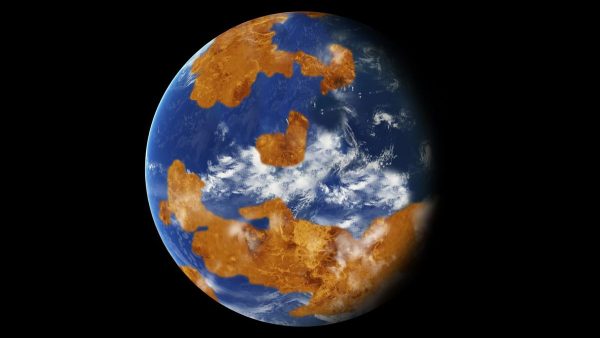To the average human, our knowledge of space is limited to our home, and the only known habitable planet, Earth. However, scientists have predicted images of what other Terrestrial planets looked like billions of years ago. Scientists used scientific data of the atmosphere and landmarks on the surfaces of these planets to make educated predictions about what these planets once looked like. This knowledge about other Terrestrial planets in our solar system has brought great technological advances, contributing to the development of possible habitable planets in the future.
Mars

Scientists have predicted that Mars once was a blue planet. Unlike its current dry and red state, scientists believe that Mars was once covered in water, deep as 1,000 feet or more. Additionally, there has been evidence of past conditions that would be able to support life, such as water and a magnetic field. According to NASA, Mars unfortunately lost its habitability due to the loss of its magnetic field. This caused the water on Mars to disintegrate from solar wind, eventually causing Mars’s surface temperature to rapidly cool.
Venus

Venus, or “Earth’s Twin” is the closest planet in size to Earth and resembles it most in shape. Although Venus has a toxic atmosphere today, it is believed by scientists that it had resembled the current Earth. According to science.org, Venus had oceans and earth-like temperatures. However, they were washed away by the sun’s aging. For instance, once the sun had aged, the habitable zone had moved outward, causing water vapors to get trapped in the atmosphere, bringing a large rise in temperature around the planet. Eventually, global temperatures rising caused bodies of water to evaporate from the atmosphere and cause the atmosphere to be full of carbon.
Mercury

Mercury is the closest planet to the sun and lacks any significant atmosphere or signs of atmosphere. The extreme weather conditions that seemed to have existed on the planet for a very long time likely signify that Mercury has not been habitable in the past. However, Mercury in its past used to be much bigger in size compared to its present minuscule size. Additionally, Mercury used to be much further away from the sun and likely had longer days and years due to its orbit being longer.
Conclusion
Knowledge of Terrestrial planets in our solar system can prove beneficial to understanding our planet, Earth. The history of Mars, Venus, and Mercury can be complicated because of limited information and inferences from our scientists. However, this information is crucial to understanding the atmospheric conditions needed to sustain life on a planet. Therefore, using the information provided of the physical properties of Earth, we can start to understand the physical and chemical properties of our sibling Terrestrial planets.






